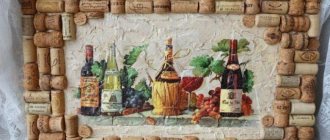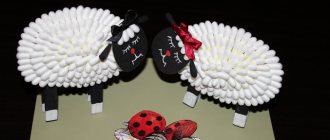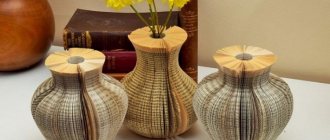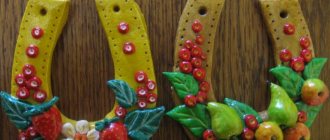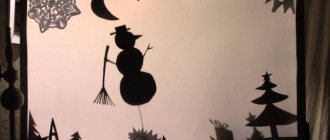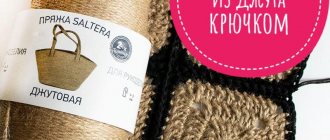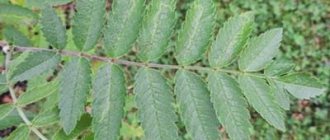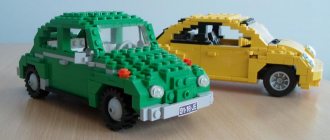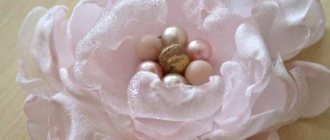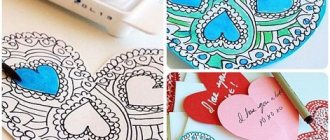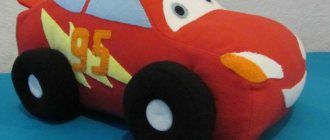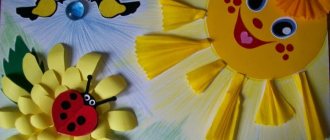Do you have too many coins in your piggy bank? There is no longer room to put them, but it’s a pity to throw away something that has been accumulated for many years? It's time to make some beautiful crafts yourself.
Almost all people are sure that simple coins today can act exclusively as a means of payment. If you actually show a little imagination, DIY coin crafts can easily become a creative gift. Having studied the proposed craft options, you will definitely understand that it was not in vain that you spent so much time collecting coins.
Why coins?
- the material is as accessible as possible;
- nothing will happen to the coins for a long time;
- ease of use
- beautiful and varied type of coins;
- You can find craft options for both adults and children.
What crafts should you start with?
If you are just starting to try to work with metal money, it is better to choose simpler options to get your hands on. For example:
- pasting coins on vases, pots, flowerpots;
- decorating frames for photographs, paintings;
- creating topiary, money bottles, boxes.
In the future, experienced craftsmen may create “floating bowls”, money trees, home and furniture decor, and jewelry making.
Advice from the experts
Before starting work, you should clean the coins from blackness, dirt, and rust. You can clean it at home using:
- citric acid (add citric acid to warm water, stir, put coins in there for 10-15 minutes, then rinse under the tap);
- vinegar + toothpaste (dip money in a 5% vinegar solution, after 5 minutes brush with toothpaste, rinse under the tap);
- Coca-Cola (dip coins in lemonade for about a week, then brush and rinse);
- soda (mix soda, toothpaste and ammonia, rub the money with the resulting mixture, then rinse under water).
Let's look at a few examples of creating crafts from coins.
LiveInternetLiveInternet
—Quote book
We sew our own curtains with eyelets Curtains occupy a very important place in interior design.
Today . Electronic pattern for a cut-off dress “waterfall + warehouses” Vera Olkhovskaya Sizes: 42-52.
Variations on the theme *sun* (skirts “sun”, “half sun”, “3/4 sun”).
Freddie Mercury. “I really did everything I could...” Freddie Mercury (eng. Freddie Mercury.
Knitting "Owl" pattern. For the sample we cast on 16 stitches + 2 edge stitches (added 4 stitches to the repeat.
—Tags
—Categories
- sewing (936)
- master class (794)
- handicrafts (747)
- crochet (481)
- knitting (302)
- useful tips (298)
- This is interesting (276)
- photography (271)
- everything for the home (260)
- cooking (247)
- for children (228)
- poetry, love lyrics (228)
- baked goods (216)
- decor (203)
- sweet dishes, dessert (203)
- for women (180)
- positive (177)
- indoor flowers and more (171)
- chicken dishes and more (164)
- travel, cities (157)
- beauty and health (150)
- summer resident (147)
- snacks (145)
- artists (131)
- music and cinema (130)
- humor (130)
- nature (124)
- interior (122)
- animals (120)
- painting (112)
- homemade preparations (102)
- aphorisms, sayings of the great (95)
- salads (90)
- fish dishes (89)
- from old - new, alterations (88)
- ideas (86)
- fashion world (85)
- art (83)
- your health (81)
- Anastasia Korfiati (80)
- grandma's advice (79)
- cooking-drinks (79)
- celebrities (78)
- topiary (62)
- coffee crafts (45)
- my computer (44)
- curtains and everything about them (42)
- cats (41)
- astrology, horoscope (33)
- congratulations (30)
- for men (27)
- Armalini Sewing School (24)
- hairstyles (24)
- psychology (23)
- Tatyana Snezhina (16)
- diet (16)
- man and woman (15)
- bread machine (14)
- birds (14)
- sewing machine repair (13)
- sculptures (12)
- tests and fortune telling, magic, spells (11)
- newspaper weaving (7)
- Ekaterina Rozhdestvenskaya (7)
- insects (5)
- Olga Nikishicheva (4)
—Links
-Music
-Always at hand
—
—Search by diary
—Subscription by e-mail
—Interests
-Friends
— Regular readers
—Communities
-Statistics
Photo frame
Required materials: coins of different sizes, cardboard, glue, possibly putty, plasticine, modeling dough, paint, varnish.
Work progress: Cut out a hole of the required size from cardboard. We cover the frame with coins according to our own imagination. To make it easier to change photos, it is fashionable to attach special photo holders to the back.
Money Tree
Required materials: coins, thick wire for the trunk (or real branches), thin wire, drill, additional material according to the plan (for example, paints, a stand, etc.).
Work progress: create a tree from branches or wire and plant it on a base. Next, use a drill to make small holes in the coins, thread a thin wire through them and twist branches of 2-4 coins.
When we get the required number of branches, we attach them to the tree trunk. If you are not satisfied with the appearance (wire sticks out, unevenness), then, if necessary, mask it with putty, plasticine or other available material.
If desired, the finished wood can be coated with paint or varnish.
The money tree symbolizes financial stability and attracts money to the house.
Decorations
Coins have long been used to decorate clothes, make jewelry and talismans from them. Moreover, the money in the product did not lose its purchasing power. A bracelet or monisto could be exchanged for food.
Modern craftsmen drill holes in coins and connect them together with wires, forming chains (sometimes in several tiers). You can make a pendant, earrings, or bracelet from coins with a hole. In the latter case, pennies can be attached to a chain with small rings made of thin wire or connected by braided cord.
Making a ring is a little more difficult, but the craftsman is afraid, so nothing is impossible for a handy man.
Chandelier decor with coins
Coin necklace
Coin painting
Required materials: coins, glue, plywood/cardboard, frame, paint or fabric.
Work progress: first you need to decide what will be depicted in the picture. Let's look at the example of a heart. Prepare the base (paint or drape plywood/cardboard with fabric). Draw a heart. And then there are two options for creating a picture:
- Painting in one layer. It's simple: we cover the drawn space with coins. To make the picture original, you should choose coins of different sizes for this method, then the image will look more interesting
- Three-dimensional picture. For this option, you can use coins of the same size. First, glue the coins in one layer. Next, glue the second layer, but step back from the edge by about 1 cm. Using the same scheme, glue the third layer and continue until we reach the required volume.
This painting will be a wonderful gift for friends and family for any event.
Canvas for good luck
To make the painting you will need the following materials:
- photo frame, size is selected depending on the size of the tree;
- fabric for the main background, it is better to choose a denser one;
- paper napkins;
- glue;
- coins, all of the same denomination is selected, or they can be of different denominations;
- heat gun;
- acrylic paint, it is recommended to choose black and bronze;
- scissors;
- brush;
- marker or pencil;
- a small piece of foam rubber or sponge.
The master class consists of the following stages. First stage. First you need to carefully remove the glass from the frame and put it aside for a while. Place the cardboard base on the fabric and trace with a pencil. Cut out the fabric and apply a thick layer of glue onto the cardboard. Glue the fabric onto the cardboard and dry thoroughly. Now you can draw a sketch of the future tree.
While the fabric is drying, we don’t waste time, but prepare the coins for work. They need to be cleaned and degreased to make it easier to apply paint.
Second phase. Each napkin needs to be folded in half and cut to get long flats. Depending on the texture of the future tree, the strips are made from one to one and a half centimeters in size.
You can start twisting the bundles. Place a strip of napkin in a cup of cold water. She should be completely wet. Remove carefully so that the strip does not tear or lose its shape.
We hold the strip in the palm of one hand, and with the other we begin to slowly twist it into a tourniquet. The process is similar to creating “sausages” from plasticine. In this case, you should try to twist the tourniquet at approximately an angle of 45 degrees. You need to twist it as tightly as possible and, placing it at a short distance from each other, let them dry well.
Related article: DIY felt angel for a Christmas tree: master class with patterns
Third stage. To make it easier to work with flagella, you need to moisten them a little with water. You can use a flower sprayer. Next, take one flagellum, lubricate it well with glue and place it on a prepared base made of cardboard and fabric. A sketch of the tree will help you distribute the strands in the right direction. But it is worth remembering that you do not need to apply too much glue. Excess glue can degrade the appearance of the wood once it dries.
Fourth stage. To create thin branches of the tree crown, you can use a glue gun. Hot glue is applied along the contour of the branches of the sketch in thin strips. And while it has not yet hardened, we glue the coins. To create a more three-dimensional image, you can paste several layers of coins, placing them in random order. The number of layers and coins depends only on the wishes of the master. The “cobwebs” left on the tree after using a glue gun can be easily removed with a stiff brush. After this, the painting must be given time to dry completely.
The final stage. Now the elements of the picture, namely the trunk and crown, need to be primed. Using a piece of foam rubber, apply a layer of black acrylic paint to the entire tree. And again we leave it to dry. The tree trunk will have to be coated with black paint one or two more times. When dry, napkins can almost completely absorb the color.
Next, take bronze-colored acrylic paint and pour a little into a shallow container. We dip the sponge very slightly into the paint and easily, with the same effort, we go over the entire tree and background. If you are not sure that it will turn out well, it is better to first practice on a sheet of paper or a piece of fabric.
Instead of bronze acrylic paint, you can use silver or gold paint. You can try paint combinations on a different surface, this will help you choose the final option.
Related article: Three DIY beaded snowflakes
You can also choose spray paint rather than acrylic paint for your work. When painting with such paint, you should remember that when applying you need to hold the can at a distance of about 50 cm, and spray with smooth movements. If desired, the frame can be painted or decorated with coins. Then turn our picture frame face down and carefully place the glass. Secure the resulting picture with clamps to the frame.
The painting with the image of the money tree is ready!
Below are several photos of tree options made from coins.
Letters or numbers
Required materials: coins, glue, base (cardboard, plywood, foam).
Work progress: cut out letters or numbers from the existing base. Cover the base with coins.
This extremely simple decor can be used to decorate a photo zone at any photo shoot, any holiday or event.
Panel
The basis for the panel can be a rectangular sheet of plywood or fiberboard. This method of storing travel souvenirs is much more convenient and effective than keeping “trophies” in bulk.
Designing a panel in the form of three-dimensional letters is as easy as shelling pears. We cut out symbols from plywood or cardboard (you can use thick foam or other convenient material) and glue coins of various denominations and sizes (currencies of different countries) onto droplets of hot glue.
Frame decor with coins Picture of different coins
Vases
Required materials: coins, base (any vase you want to decorate), glue.
Progress of work: paste coins over the vase taken as a basis.
Additionally, for such a vase you can make branches and place them inside.
Coin necklace
Materials needed: coins, hammer, drill or awl, necklace fittings.
Work progress: first you need to flatten the coins using a hammer. Firstly, this way we will remove the design from the coins, so that not 10-kopeck money, but beautiful metal circles, will appear on the neck. Secondly, the thinner the coin, the easier it is to make holes in them. Therefore, the next step is to make these same holes and attach the coins to the fittings we have.
Any decoration is made using this principle. It all depends on the chosen fittings. This could be a bracelet, brooch, earrings, rings.
Monisto among various peoples
As mentioned above, monistos were worn by women of many nations: they were found during excavations almost everywhere, from Scandinavia to Africa. But everywhere these decorations bore special national features. For example:
- Among the Udmurts, Mari, Bashkirs and some other peoples, monisto existed mainly in the form of fabric shirt-fronts (do you feel the similarity of the words?) with coins, medals and other round plaques sewn on them. The decoration could be complemented by bead embroidery (usually along the neckline).
- The most typical decorations for Tatar women were “yak chylbyry” - collar fasteners with five chains decorated with plaques. But some nationalities had variants on chains and fabric.
"Yaka Chylbyry
- The peoples of Central Russia often had a combination of coins with beads (mostly red). With the advent of Christianity, decorations began to be supplemented with crosses.
- Turkish women typically fasten coins on chains and threads. Moreover, this decoration is only for married ladies. True, engaged girls were allowed to add one coin to their image as a sign of status, but no more!
- The gypsies attached coins (and only them!) mainly on chains, in one to three rows. Additions in the form of stones and other inserts are typical only for gypsy jewelry of modern times.
Gypsies carefully preserve their own traditions. Perhaps, on representatives of this people you can see the monisto most often.
Monistos served not only as amulets against evil spirits, but also as symbols of prosperity, as well as original piggy banks. The wife kept the family treasury in the truest sense of the word. However, over time, drilled coins were no longer accepted for payment, and the monisto became exclusively a decoration-amulet.
Already in the Middle Ages, among many peoples, monistos gradually gave way to breast embroidery, which was much more convenient for everyday wear. But bulky jewelry remained: they were worn, so to speak, for representational purposes: at weddings, births, christenings and other major holidays.
How to extend the life of a finished product?
Another advantage of coins as a material for creating decor and crafts is that it is easy to maintain in its original condition or reanimate. For this you can use acrylic paints or varnish.
This coating of coin crafts will make them brighter and not exposed to the external environment.
In fact, coins can be used for anything:
- Furniture decoration (mirrors, tables, stools, bedside tables);
- To create original gifts for family and friends;
- For crafts for kindergarten and school;
- Coins can be used to make individual jewelry (brooches, necklaces, earrings).
To make crafts from coins, all you need is your desire. Ideas? You can take it from the Internet. Material? Somebody probably has coins lying around, but everything else can be bought at the store.
Good luck in your endeavors!
What can be done to ensure that the craft does not lose its spectacular appearance over time?
Experienced craftsmen cover coins with spray paint (silver or gold) and then with acrylic varnish in several layers. This item is easy to care for. It can be wiped with a damp cloth.
How to achieve a smooth surface? If the gaps between the pennies bother you, you can fill them with silicone. Moreover, it is not necessary to use a transparent composition.
Chair decor with coins
Money tap made from coins
